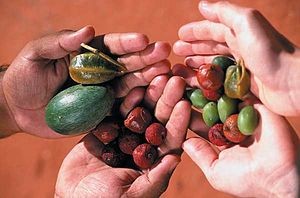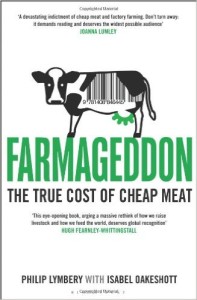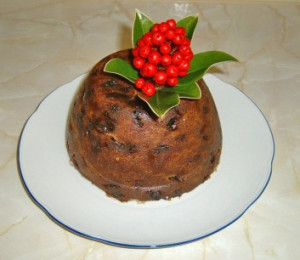
Recently (October 2016) I attended a talk, The Politics of Bush Food Now, at the National Art School in Darlinghurst.
The speakers were:
Bruce Pascoe – he won the NSW Premier’s Award for Dark Emu and thoroughly deserved it.
Jody Orcher – she is an Aboriginal woman and the Royal Botanic Garden Sydney’s Aboriginal Education Coordinator.
Jade Santo – She is an Aboriginal woman, and an apprentice cook at Fratelli Fresh.
Tanya Denning-Orman – She is an Aboriginal woman and the NITV Channel Manager.
Freya Herring – she was a former pastry cook and now the restaurant editor for Time Out.
Lennox Hastie – He was a chef in the Basque country of Spain, and now runs Firedoor restaurant, Sydney.
They introduced themselves and spoke about traditional lands, family/mob, and respecting elders; ownership of the products and intellectual property; the issue of appropriating foods and traditional cooking methods.
Lennox Hastie, as a chef, said that chefs and their customers need to be educated about the above issues. Putting these products on menus can only be done if the food combinations are delicious. Availability from the suppliers needs to be consistent, and there has to be some commercial reality regarding promotion and pricing. Otherwise, the fear, rejection and bigotry will continue.
Here’s what I started to write several months ago about this issue:
Early in 2016, John Newton published a new book titled The Oldest Foods on Earth. And in case you’re wondering, it’s well worth reading.
Rene Redzepi participated at MadSyd on 3 April 2016 at the Sydney Opera House, here’s a quote from John Newton’s blog:
After all, it was founder Rene Redzepi’s musing on what was lacking in that cuisine in 2010, and he was specifically talking about native ingredients – ‘…it’s a poor culture if it doesn’t have a true, unique expression that can only be represented right there at the place’ – that led him to return and to open his pop-up Noma to end his sojourn with MadSyd.
In the early ‘90s there was some interest in Aboriginal foods in some Sydney restaurants, and has been quite a lot written about this theme: Is there an Australian cuisine? What would one look like? And subsequently: is there still a problem? And what should be done about it?
To provide some background, here are some quotes from some articles published in the Australian press since the early ‘90s:
Baby wattleseed blini topped with cress, smoked emu, avocado and bush tomato chutney. Handmade agnolotti filled with yabbie mousseline on a bed of warrigal greens; lemon aspen beurre blanc. Sliced breast of squab with a jus flavoured with lilli-pilli, accompanied by bunya nut roesti…….
All of the above dishes work well, and all are as worthy of the gourmet palates of the world as many of the great dishes of France. Why has it taken us 200 years and a band of four or five enthusiasts led by the unassuming environmentalist Vic Cherikoff to bring all these wonderful foods to our notice? (Anonymous 10/8/91)
It’s true that a national cuisine need not rely exclusively on indigenous ingredients (Thais are wedded to the chilli and Italians to the tomato, both imports from America) but I can’t help thinking that our failure to come to terms properly with the native resources of the land is a unfinished item on the national agenda – not the most important item, perhaps, but unfinished nonetheless. (Anonymous 3/2/01)
Cherikoff sees Australia’s lack of acceptance of bush foods as symptomatic of the cultural – and culinary – cringe.
“Australians never really appreciated anything until it comes in from overseas, even if it’s part of their own culture. A good example of that was Aboriginal art, which ignored here for years until the Americans and Japanese got interested in it.” (Cherry Ripe 8/8/92)
It’s no cause for congratulation that we are more familiar with French products than native Australian foods. Yet all these foodstuffs have more in common than you might imagine: they are all part of two ongoing projects to catalogue foodstuffs in France and in the Top End…..
The two projects have more similarities than difference: both aim to prevent knowledge of certain foodstuffs – or in France, the actual food products themselves – disappearing. They recognise food is part of culture and the importance of recording such traditions before they disappear. (Cherry Ripe 11/12/93)
….The beef industry is killing our soil, yet still we are killing vast numbers of kangaroos and rabbits. We must use the natural things, the things that suit our country. Just as Australian Aborigines did: Now, they had a gastronomically well-organised community. They managed to live in harmony with their environment for a millennium. This is what we must aim at. (Dr Graham Pont, undated)
Today, in Paris, Bruneteau, who was named in the magazine Point de Vue as the “young founding father of Australian cuisine” is unfazed by remarks such as those of the French journalist who was reported as saying that Australian cuisine is something he had heard about but didn’t believe in…..
The reasons for this reticence towards native foods include the expense and the problem of sourcing adequate supplies, the difficulty of incorporating new flavours into traditional European recipes and basic ignorance of the ingredients themselves. Most Australian chefs don’t know their geebungs from their billygoat plums….
“Generally I don’t use them to be honest, it’s probably through a lack of knowledge,” he says. “A lot of chefs are a bit wary [of the produce] that they look a bit gimmicky, a bit of a sideshow.”…..
“I’m a bit scared by some of those flavours because they’re so full on. I’ve eaten them and found them quite nice, but haven’t got the balls to go ahead with it.”……
But slowly things are changing. The word is trickling out about the ingredients hiding in our backyard. And the style has some support in high places, according to Jean-Paul Bruneteau. In 1989 Bruneteau was summoned to a suite occupied by world famous chef Paul Bocuse at The Observatory Hotel and requested to prepare a degustation menu using native ingredients.
Bocuse ate slowly and in silence. At the end of the meal, he sat back, dabbed his mouth with his napkin, lifted his wine glass and exclaimed: “Vive la cuisine Australienne!” (John Newton 27/6/00)
Now, even, as they become a hit overseas for chefs and diners with an experimental bent, most Australians shun them, or consider them fit for adventurous palates only. What are passionate new-wave culinary pioneers like Raymond and Jennice Kersh – the brother and sister who run a slightly less brazenly indigenous Edna’s Table in another part of the CBD – to do?
The argument for eating more native foods is not just about the quality, although it is true they are health for customers and the environment. Cherikoff uses numbers to show how our culinary horizons have shrunk.
Alan Beale, of Lillipilli on King…..Six in 10 of Beale’s customers are from overseas, mainly from Europe, the US and Britain. Four visiting Danish cabinet ministers, he says, raved about the food and wanted to introduce in to Denmark. Aborigines and country Australians who have already tried and like indigenous flavours are among his biggest fans.
The Kershs worry that Australian ambivalence will see a valuable resource slipping out of our grasp. “All this will be transferred overseas. We will not be able to call it our own anymore,” says Raymond.
“It just needs…. A lot of people putting up their hands and saying, ‘Let’s have a go at it.’” (Debra Jopson 14/1/04)
From these quotes you could easily conclude that the culinary cringe is still alive; it looks like we still need foreign chefs like Redzepi, Bocuse and Bruneteau to give us permission to ‘have a go at it.’ What are we so scared of?
Recently I met a very pleasant Irish lady who wanted to know where in the Sydney CBD she could get a quick bite of takeaway lunch. I made several suggestions: sushi, wraps, Thai, Chinese dumplings, souvlaki, all the usual stuff. She stared at me and asked how come I eat all this stuff. I told her that it’s nothing unusual in Sydney, and that I used to be a chef, so I’m open to all sorts of dishes and cuisines. She was quite taken aback, became slightly petulant, and settled for a plain filled roll, thanks very much.
A couple of weeks later I happened to meet another nice Irish lady, and related this story to her. She said that there are different cuisines available in Dublin, which don’t scare the horses.
But, inspite of this ignorance, most migrants since 1945 introduced different cuisines, which most people embraced.
However, I imagine that some Australians’ attitude to Aboriginal foods is diffident due to lack of familiarity, and the assumption that it’s too: different, strange, spicy, unpalatable. Instead of trying a mouthful, they reject it for psychological reasons.
I remember a long time ago when working as a sous chef in a hotel, one night a room-service waiter asked what was the staff meal going to be. Chef said it was seafood marinara, or similar, I can’t remember exactly. The waiter said he didn’t like scallops or something, to which chef asked if he’d ever tried them. And no, he hadn’t, so the chef asked him how did he know he didn’t like them if he hadn’t tried them?
What is a sustainable cuisine? That’s a big question. It started out as food which is available in an area, cooked or treated in some way, and with repetition, largely became a tradition and a cuisine. But events helped to influence that, eg. tomatoes arriving in Italy from South America, potatoes arriving in Europe from South America. There are the effects of colonisation, war, trade and now, pollution, scarce water, pesticides, weather fluctuations and climate change.
This means people adapt their culinary practices and dishes. But for about 200 years Anglo migrant Australians didn’t adapt to their environment, indigenous foods obviously being available. Other colonised countries seemed to adapt more readily to what was available in their landscapes.
So what’s our problem? Why the negative perception? Is it lack of education? Can’t we cope with new ideas? Why the unthinking knee-jerk assumptions and practices? In front of foreign tourists, that’s just plain embarrassing.
Decades ago, Chinese cooks had to put frozen peas and carrots in fried rice just to make it seem ‘normal’ and therefore sell it. In recent years we adapted to cooking lambs’ shanks, oxtail, and other secondary cuts, and managed to cope with those. Celebrity chefs put them on their menus and promoted them. Not too hard, you’d think.
With this nervousness about Indigenous foods, someone suggested that probably the best way to introduce them on to our menus, is by stealth. Chefs are the main influencers who can sneak it on to their menus, talk it up, promote the hell out of it, and educate people.
But, to give it the benefit of the doubt, cultural cringe may be slightly decreasing.
Currently, a few chefs are having ‘a go at it’, including Aboriginal chefs. Here’s a list of people, food and restaurants which include some Indigenous foods:
Clayton Donovan, http://www.theaustralian.com.au/life/food-wine/clayton-donovan-of-wild-kitchen-is-a-native-foods-elder/news-story/80884c8a22ee9e680f61595aff34b41e
Mark Olive, http://www.lifestylefood.com.au/tv/the-outback-cafe/
Kylie Kwong, http://www.kyliekwong.org/
Brent Savage, http://www.thebentley.com.au/menus/a_la_carte/
Gardener’s Lodge Café, http://gardenerslodge.com.au/food-drink/
Biri Biri Café, Redfern https://www.zomato.com/sydney/biri-biri-redfern
And http://heycafes.com.au/01912196/Biri_Biri_Cafe
The Gantry, Walsh Bay, http://www.thegantry.com.au/
Food products: Outback Pride, http://www.outbackpride.com.au/about
Tasting Australia, Simon Bryant http://www.tastingaustralia.com.au/en/news/2016/mar/10/home-grown-program
 As the title suggests, this book is an investigation and an indictment of industrial farming. Lymbery starts by explaining what Rachel Carson wrote about in Silent Spring in 1962. The deterioration of the environment, the mistreatment of animals, and the proliferation of chemicals have not stopped since then. Remember mad cow disease and the horsemeat scandal? Since then farming has deteriorated even more.
As the title suggests, this book is an investigation and an indictment of industrial farming. Lymbery starts by explaining what Rachel Carson wrote about in Silent Spring in 1962. The deterioration of the environment, the mistreatment of animals, and the proliferation of chemicals have not stopped since then. Remember mad cow disease and the horsemeat scandal? Since then farming has deteriorated even more.
